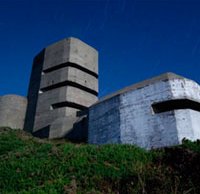“Stop” wasting time when dialing in your exposures at night with this simple tip from Karl Taylor
posted Monday, June 20, 2016 at 10:40 AM EDT

That pesky moon, it always creates tricky exposure situations when shooting at night and wastes your time partaking in what feels like fruitless trial and error, right? Photographer Karl Taylor wants to help reduce this tedium by relying on very high ISO speeds and a bit of mental arithmetic to prepare you to take full advantage of the “surreal” light that the moon provides a landscape scene.
When photographing a moonlit landscape, Taylor likes to use long exposures, perhaps even as long as an hour or more, to expose the moonlight moving across the scene as the moon traverses the night sky. If you’re taking a long exposure image, you want to be confident that your settings will provide the desired result before you commit a good chunk of time to a single shot. Taylor ponts out a fast and simple way to achieve this.
When wanting to shoot at ISO 100, he does a test exposure at ISO 6400 with an aperture of f/2.8. A one second exposure with those settings happened to deliver a good exposure for this particular setting. Now this is where an understanding of stops is critical. In the video below, you can see Taylor go through the math to arrive at a 16 second exposure at f/11 given ISO 6400. But he wants ISO 100 so he can capture a long exposure and get star trails in his shot.
A one stop reduction in ISO essentially doubles the exposure time. As you can see in the video above, a high ISO test exposure (which is the fastest way to dial in your exposure with your desired settings) of 1 second at f/2.8 with an ISO of 6400 is equivalent to a 16-minute exposure at f/11 with an ISO of 100. That’s not quite long enough for a star trail though, so another stop down in aperture to f/16 provides Taylor with the desired 32-minute exposure time.
It's important to consider that nighttime conditions can vary wildly depending on the phase of the moon, atmospheric conditions and more, so simply memorizing settings from Karl Taylor’s video won’t necessarily work for you. The real takeaway here is the practical advice of using a high ISO test shot and then applying your knowledge of stops to dial in the exposure for your desired image on that particular night.
For more videos, including tutorials, from Karl Taylor, visit his YouTube channel.
If you need to brush up on aperture, shutter speed or ISO stops, see this comprehensive article at Photography Life.
(Seen via DIY Photography)